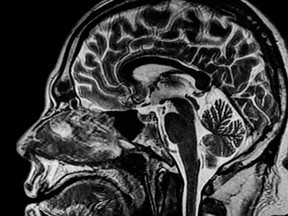
It is being hailed as a world’s first in the fight against Parkinson’s disease.
Researchers at Sunnybrook Health Sciences Centre and University Health Network discovered focused ultrasound technology is safe to provide treatment to targeted brain regions in patients with Parkinson’s disease.
From our newsroom to your inbox at noon, the latest headlines, stories, opinion and photos from the Toronto Sun.
Thanks for signing up!
A welcome email is on its way. If you don't see it, please check your junk folder.
The next issue of Your Midday Sun will soon be in your inbox.
“Our early findings are an exciting and critical first step in less invasive direct-to-brain delivery of therapeutics to key areas of the brain important in the development and progression of Parkinson’s disease,” said Dr. Nir Lipsman, the study’s co-principal investigator and director of Sunnybrook’s Harquail Centre for Neuromodulation.
“Current management strategies for Parkinson’s include medications and more invasive neurosurgery. Focused ultrasound is a less invasive, targeted approach that could change the way brain disorders are treated in the future.”
Low intensity MRI-guided ultrasound technology uses ultrasound waves to breach the blood-brain barrier, a layer that protects the brain from toxins but can also hinder medications from getting to where they are needed.
Often, treatments can’t cross the blood-brain barrier because compounds are too large.
In some cases, open brain surgery is needed to help manage Parkinson’s, a brain disorder that causes uncontrollable movements, impacting a patient’s quality of life.
Researchers examined the delivery of an enzyme, glucocerebrosidase, to the putamen which is a key structure in the brain related to movement.
Glucocerebrosidase may help to prevent buildup of the protein alpha-synuclein, a key factor of Parkinson’s that leads to unhealthy brain cells.
Recommended video
The first phase of the trial included four patients with an average age of 54 who had been diagnosed with early-stage Parkinson’s.
The patients received three doses of the therapeutic and application of focused ultrasound every two weeks to the portion of the brain most affected by Parkinson’s.
They were followed for three- and six-month periods.
“The Phase I trial offered a hint of potential improvement in symptoms following treatment, but this requires further study. Any side effects, such as involuntary movements, were only temporary, and none were severe,” said Dr. Lorraine Kalia, co-principal investigator and a neurologist and senior scientist at the Krembil Brain Institute at UHN.
“It is still very early in the research, but with our first-in-the-world study findings, we are making much needed progress in the development of innovative treatments for people with Parkinson’s disease.”
The Sunnybrook and UHN researchers have launched the second phase of the trial and continue to investigate.
“The upcoming trial will further explore low intensity MRI-guided focused ultrasound and targeting enzyme replacement therapy to both sides of the brain. The ultimate goal is to improve the delivery of therapeutics to the brain with the hope of improved symptoms or slowed progression of Parkinson’s disease,“ says Dr. Suneil Kalia, co-principal investigator and a neurosurgeon and scientist at UHN.


